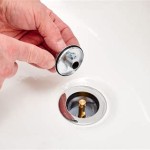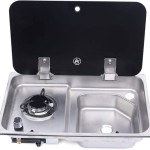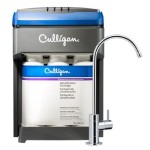What Is The Best Way To Clean Stainless Steel Sinks
Stainless steel sinks are a ubiquitous feature in both residential and commercial kitchens due to their durability, resistance to corrosion, and relatively easy maintenance. However, despite their resilient nature, stainless steel sinks can become stained, scratched, and dull over time if not properly cleaned and cared for. Understanding the best methods for cleaning stainless steel sinks is crucial for preserving their aesthetic appeal and extending their lifespan. This article explores various effective cleaning techniques, providing a comprehensive guide for maintaining the luster and hygiene of stainless steel sinks.
Daily Maintenance and Quick Cleanups
Consistent daily maintenance is the cornerstone of keeping a stainless steel sink in optimal condition. Following each use, it's advisable to rinse the sink thoroughly with warm water. This simple step removes food particles, soap residue, and other debris that can contribute to staining and the buildup of grime. Using a soft sponge or cloth is recommended for this task; abrasive scrub pads should be avoided as they can scratch the sink's surface.
For quick cleanups after minor spills or light use, a mild dish soap and warm water solution is often sufficient. Apply the solution to the sink's surface with a soft sponge, gently scrubbing to remove any residue. Pay particular attention to areas around the drain and faucet, where grime tends to accumulate. After scrubbing, rinse the sink thoroughly with warm water to eliminate any soap residue, which can leave a dull film on the stainless steel.
Drying the sink after each use is another crucial aspect of daily maintenance. Water droplets left on the surface can evaporate and leave behind mineral deposits, commonly known as water spots. These spots can be difficult to remove and can diminish the sink's shine. Using a clean, dry microfiber cloth to wipe down the sink after each use will prevent water spots from forming and maintain its glossy appearance. This practice is especially important in areas with hard water, where mineral content is higher.
Deep Cleaning and Stain Removal
While daily maintenance prevents the accumulation of grime, periodic deep cleaning is necessary to address stubborn stains, discoloration, and embedded dirt. Several effective methods can be employed for deep cleaning stainless steel sinks, each utilizing different cleaning agents and techniques.
One popular and effective method involves using baking soda. Baking soda is a mild abrasive that can gently scrub away stains and grime without scratching the stainless steel surface. To use baking soda, sprinkle a generous amount onto the sink's surface, ensuring that all stained areas are covered. Then, using a damp sponge or cloth, gently scrub the sink in the direction of the grain. The grain of the stainless steel refers to the subtle lines or patterns visible on the surface. Scrubbing in the direction of the grain helps to avoid creating new scratches.
After scrubbing with baking soda, rinse the sink thoroughly with warm water. For particularly stubborn stains, a paste of baking soda and water can be applied to the affected area and left to sit for several minutes before scrubbing. Once the stain has lifted, rinse the sink thoroughly and dry with a clean microfiber cloth. Baking soda is a versatile and safe cleaning agent that is suitable for regular deep cleaning.
Another effective cleaning agent for stainless steel sinks is vinegar. Vinegar, particularly white vinegar, is a mild acid that can dissolve mineral deposits and cut through grease and grime. To use vinegar, fill a spray bottle with undiluted white vinegar and generously spray the sink's surface. Allow the vinegar to sit for several minutes to loosen any buildup. Then, using a soft sponge or cloth, wipe down the sink, paying attention to areas with stains or discoloration. For hard water stains, you may need to allow the vinegar to sit for a longer period, up to 30 minutes, before wiping.
After wiping with vinegar, rinse the sink thoroughly with warm water. The strong smell of vinegar will dissipate quickly. To further enhance the cleaning power of vinegar, it can be combined with baking soda. Sprinkle baking soda onto the sink's surface, then spray with vinegar. The mixture will fizz, helping to loosen grime and stains. Allow the fizzing to subside, then scrub the sink with a sponge or cloth and rinse thoroughly with warm water.
For more stubborn stains, such as rust stains or food stains that resist other cleaning methods, a commercial stainless steel cleaner may be necessary. These cleaners are specifically formulated to remove stains and restore the shine of stainless steel surfaces. When using a commercial cleaner, it is crucial to follow the manufacturer's instructions carefully. Always test the cleaner on a small, inconspicuous area of the sink first to ensure that it does not damage or discolor the stainless steel. Apply the cleaner to the sink's surface with a soft cloth, gently scrubbing to remove the stain. Rinse the sink thoroughly with warm water after cleaning.
Preventing Damage and Maintaining Shine
In addition to regular cleaning, there are several preventative measures that can be taken to protect a stainless steel sink from damage and maintain its shine. One of the most important measures is to avoid using abrasive cleaning tools and harsh chemicals. Abrasive scrub pads, steel wool, and scouring powders can scratch the stainless steel surface, creating permanent damage. Similarly, harsh chemicals, such as bleach and ammonia, can discolor or corrode the stainless steel. Always opt for soft sponges, cloths, and gentle cleaning agents to avoid damaging the sink.
Another preventative measure is to avoid leaving certain items in the sink for extended periods. Wet cast iron cookware, for example, can cause rust stains on the stainless steel surface. Similarly, acidic foods, such as lemon juice and tomato sauce, can etch or discolor the sink if left in contact with the surface for too long. Always promptly remove these items from the sink and clean the surface as soon as possible.
To maintain the shine of a stainless steel sink, consider using a stainless steel polish. These polishes are designed to protect the surface from scratches and stains and to enhance its luster. Apply the polish to the sink's surface with a soft cloth, following the manufacturer's instructions. Buff the surface with a clean, dry cloth to achieve a high shine. Regular polishing can help to keep the sink looking new for years to come.
Protecting the bottom of the sink from scratches is another important consideration. Placing a rubber mat or grid at the bottom of the sink can prevent scratches from pots, pans, and other items. This is particularly important if you frequently wash large or heavy items in the sink. The mat or grid will provide a protective barrier between the items and the stainless steel surface.
Finally, regularly inspecting the sink for any signs of damage, such as scratches, stains, or corrosion, is essential. Addressing these issues promptly can prevent them from worsening and prolong the life of the sink. Minor scratches can often be buffed out with a stainless steel polish, while more significant damage may require professional repair. By taking proactive steps to protect and maintain a stainless steel sink, it is possible to keep it looking its best for many years.
In conclusion, cleaning stainless steel sinks effectively requires a combination of daily maintenance, periodic deep cleaning, and preventative measures. Regular rinsing and drying, along with the use of mild cleaning agents like dish soap, baking soda, and vinegar, can keep the sink clean and shiny. Avoiding abrasive tools and harsh chemicals, and taking steps to protect the surface from scratches and stains, will help to prolong the life of the sink and maintain its aesthetic appeal. By following these guidelines, homeowners and businesses can ensure that their stainless steel sinks remain a durable and attractive feature of their kitchens or workspaces. The key to success lies in establishing a consistent cleaning routine and taking proactive steps to prevent damage.

The Secret To Cleaning Stainless Steel Sinks Like A Pro Youtube

Cleaning A Stainless Steel Sink Going Green With Lisa Bronner

How To Clean Kitchen Sink Stainless Steel

How To Polish Stainless Steel Sink Home Diy

How To Clean A Stainless Steel Sink And Make It Shine Simple 3 Step Solution With Ingredients Found Around Your Home The Thrifty Couple

Clean A Stainless Steel Sink Easily With Wd 40 Australia

How To Clean Your Stainless Steel Sink Samyx Cleaning

How To Clean Stainless Steel Sink Stains Naturally With Baking Soda Vinegar

How To Clean Stainless Steel Kitchen Sink Like A Pro Review

Stainless Steel Sink Care







